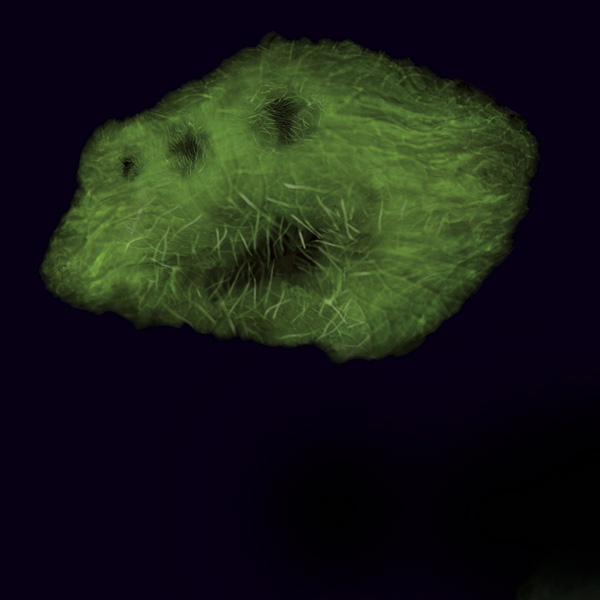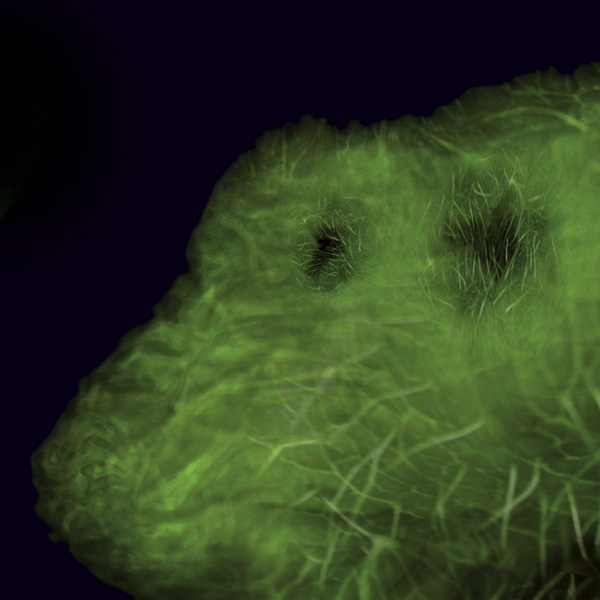offenes mündchen
open little mouth


das sackwesen osculum apertum scheidet aus drüsenartigen strukturen flüssige fäden aus, um sich an glatten oder steilen oberflächen festzuhalten. auch das lange fadengewirr auf dem rücken, wo es sich sträubt, scheidet weitere fäden aus, mit denen andere organismen gefangen werden können. der organismus ist rasenbildend. die einzelnen säckchen befinden sich in komplexem austausch von flüssigkeiten. die sauerstoffaufnahme erfolgt auf der gesamten ausdehnung der unter den fäden liegenden epidermis. bei schlechten bedingungen dient der enddarm zusätzlich dem gasaustausch. viele individuen werden nur einmal im leben befruchtet, was dazu geführt hat, dass die begattung manchmal schon stattfindet, wenn die fortpflanzungsorgane der weibchen noch nicht ausgereift sind. das kann bereits kurz nach der geburt geschehen. in diesem fall werden die übertragenen keimzellen in einem speziellen speicherorgan aufbewahrt, wo sie für längere zeiträume befruchtungsfähig bleiben können.
the sack-creature osculum apertum excretes liquid threads from gland-like structures in order to maintain contact with smooth or steep surfaces. the long, bristling entanglement of threads on its back excretes threads, with which other organisms can be captured. osculum apertum is an organism that develops lawns. the individual sacks are exchanging liquids amongst each other in a complex process. oxygen is absorbed on the entire area of the epidermis, which lies under the threads; under unfavorable conditions, the anus also supports the exchange of gas. in the process, air is constantly inhaled and exhaled. many individuals are only inseminated once in their life, which has lead to mating before the reproductive organs of the female are fully developed. this can happen even shortly after birth. the transferred germ cells are then stored in a special storage organ, where they can stay fertile for longer timespans.

